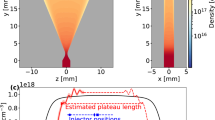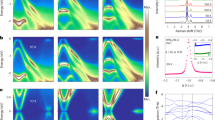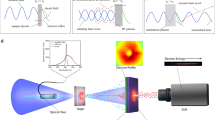Abstract
OBSERVATION of the displacement current caused by the motion of charge carriers in a discharge gap can yield quantitative information on many basic processes1, such as ionization, electron attachment and charge carrier mobilities. A relatively large number of charge carriers is, however, required to produce a signal which exceeds the high inherent noise level of any wideband detection system by a sufficient margin. Hitherto, it was necessary, except in one or two special cases, to rely on gas amplification to raise the electron current to an observable level; this is only possible, however, when ionization dominates attachment of electrons to neutral molecules. The number of initial electrons required is particularly high when measurements in electronegative gases (high voltage insulants such as SF6 and air) are to be made over the technically important range of low ratios of field strength to pressure for which the electron loss by attachment is at least as probable as the production of additional electrons by ionization.
This is a preview of subscription content, access via your institution
Access options
Subscribe to this journal
Receive 51 print issues and online access
$199.00 per year
only $3.90 per issue
Buy this article
- Purchase on SpringerLink
- Instant access to full article PDF
Prices may be subject to local taxes which are calculated during checkout
Similar content being viewed by others
References
Raether, H., Electron Avalanches and Breakdown in Gases (Butterworth, London, 1964).
Hornbeck, J. A., Phys. Rev., 83, 374 (1951).
Frommhold, L., Z. Naturforschg, 18 a, 590 (1963).
Author information
Authors and Affiliations
Rights and permissions
About this article
Cite this article
BRANSTON, D., TEICH, T. Observation of Electron Swarms produced by Laser Light. Nature 244, 504–505 (1973). https://doi.org/10.1038/244504b0
Received:
Revised:
Issue date:
DOI: https://doi.org/10.1038/244504b0



